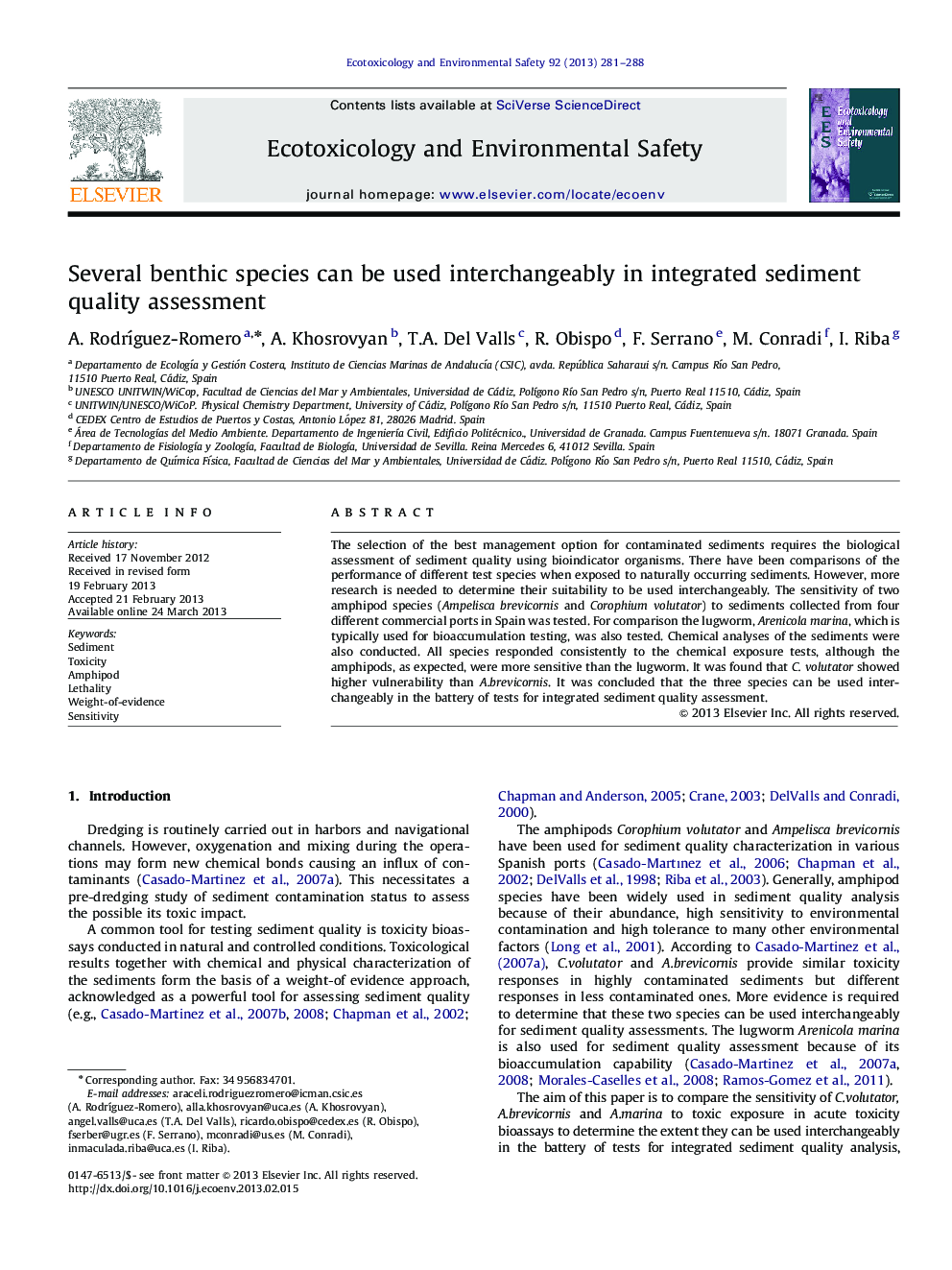| Article ID | Journal | Published Year | Pages | File Type |
|---|---|---|---|---|
| 4420463 | Ecotoxicology and Environmental Safety | 2013 | 8 Pages |
The selection of the best management option for contaminated sediments requires the biological assessment of sediment quality using bioindicator organisms. There have been comparisons of the performance of different test species when exposed to naturally occurring sediments. However, more research is needed to determine their suitability to be used interchangeably. The sensitivity of two amphipod species (Ampelisca brevicornis and Corophium volutator) to sediments collected from four different commercial ports in Spain was tested. For comparison the lugworm, Arenicola marina, which is typically used for bioaccumulation testing, was also tested. Chemical analyses of the sediments were also conducted. All species responded consistently to the chemical exposure tests, although the amphipods, as expected, were more sensitive than the lugworm. It was found that C. volutator showed higher vulnerability than A.brevicornis. It was concluded that the three species can be used interchangeably in the battery of tests for integrated sediment quality assessment.
► A.brevicornis, C.volutator and A.marina demonstrated consistent acute responses. ► A.brevicornis, C.volutator and A.marina similarly characterized sediment quality. ► C.volutator is vulnerable to sediment physical and chemical condition. ► These species can be used interchangeably in integrated sediment quality assessment.
